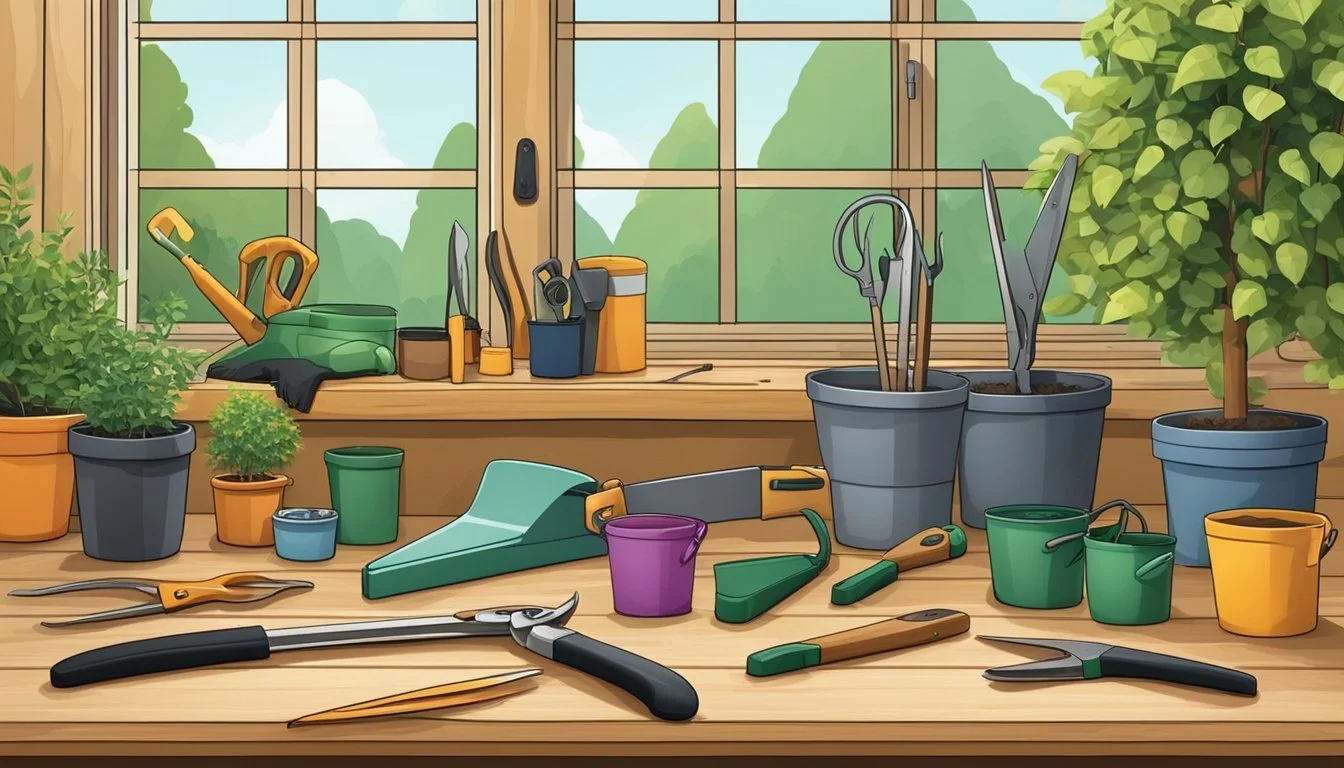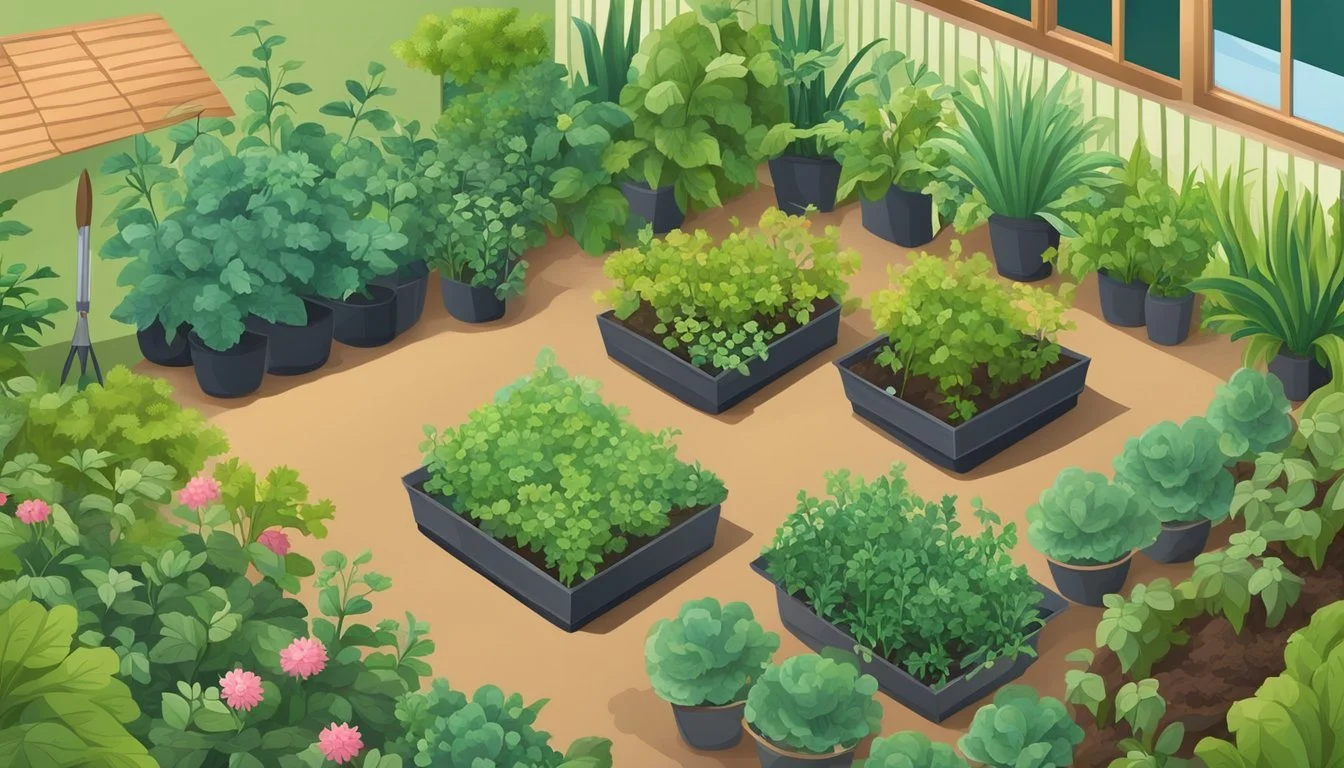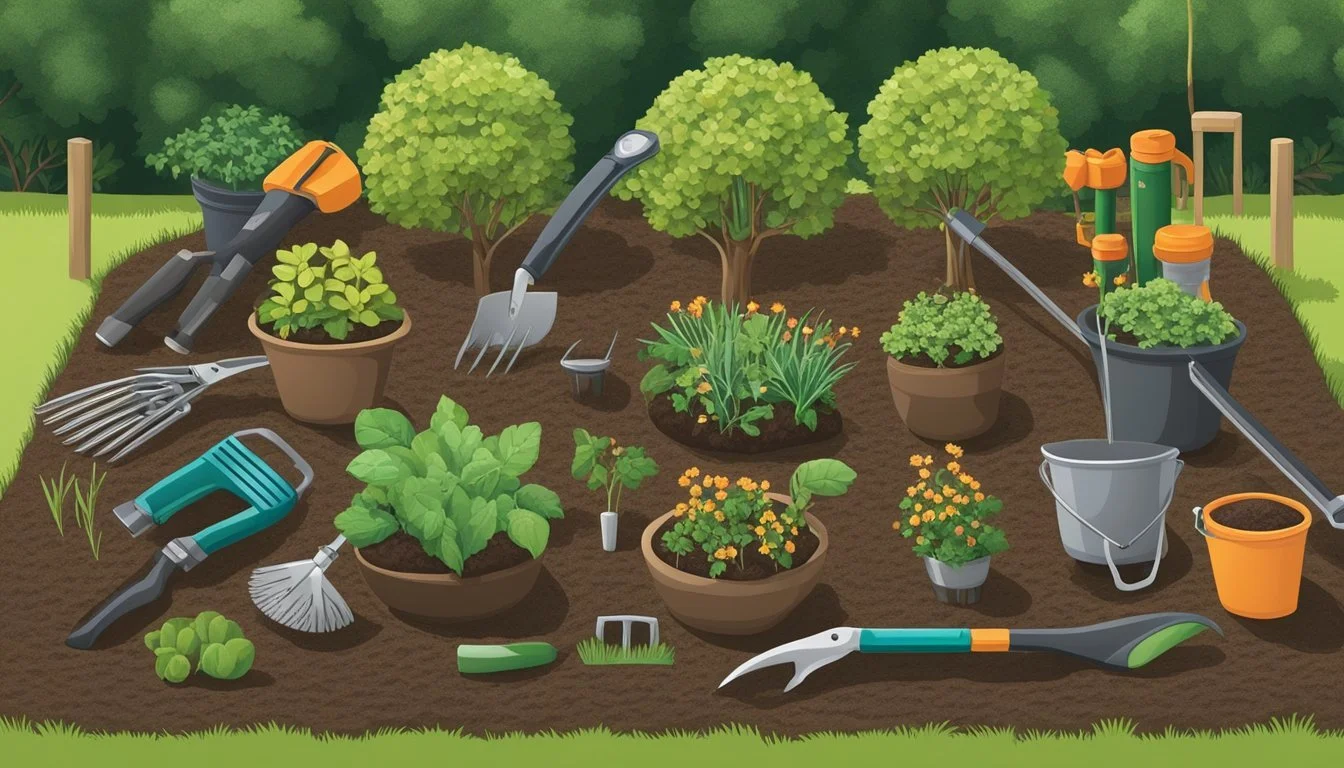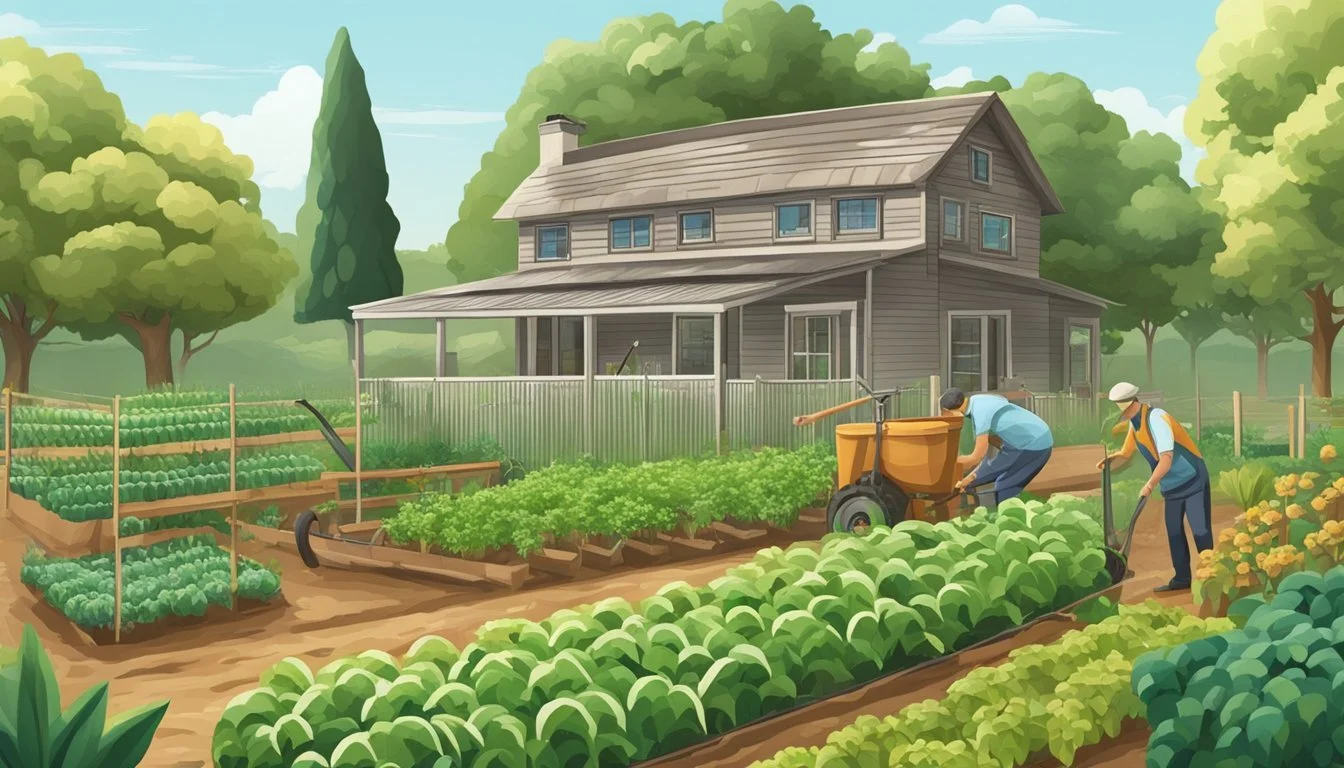The Best Crop-Specific Pruning Tools for Enhanced Homestead Plant Health
Pruning is a vital technique in horticulture that not only shapes plants but also encourages healthy growth and production. Each crop has distinct requirements, with specific tools designed to carry out pruning tasks effectively. Choosing the right equipment for crop-specific pruning is paramount for any homesteader looking to ensure optimal plant care. These tools are crafted to provide precise cuts that minimize damage to plants, thereby aiding in their recovery and continued vigor.
The benefits of using the correct pruning tools extend beyond just aesthetics. Proper pruning reduces the likelihood of disease by removing dead or damaged branches, and it also promotes better air circulation within the plant canopy. Additionally, for fruit-bearing crops, strategic pruning enhances the quantity and quality of the yield. The practice requires an understanding of plant biology as well as the lifecycle of each crop to maximize the benefits of pruning.
Homesteaders must equip themselves with the necessary knowledge to tend to their crops. This involves recognizing the appropriate time to prune each plant species, as mis-timing can lead to poor growth or even harm to the plant. Equally, understanding the correct pruning techniques and caring for the tools themselves—keeping them clean and sharp—forms an integral part of maintaining a healthy and bountiful garden.
Understanding Pruning and Plant Health
Pruning is not merely a horticultural practice; it is a vital part of plant care that directly influences plant health, growth patterns, and crop productivity. By strategically removing parts of a plant, one can effectively redirect nutrients to promote healthy development and improve yield quality.
The Science of Growth and Pruning
Pruning works on the principle that plants grow by directing nutrients to new and existing branches, leaves, and fruits. Selective removal of certain parts of a plant ensures that nutrients are not wasted on overgrown or dead branches, but are instead rerouted to foster vibrant growth and fruit production. Techniques vary between crops, as each plant has unique growth patterns and pruning requirements.
Deciduous trees: optimal in late winter when trees are dormant
Berry bushes: after harvest to remove old canes and stimulate new ones
Vegetables: regular pruning to remove dead or yellowing leaves
Benefits of Pruning for Crop Productivity
Pruning directly impacts the vitality and yield of crops, making it an essential component in achieving high-quality produce. Benefits include:
Enhanced fruit size: through thinning, plants expend less energy on fruit quantity and more on size
Improved plant health: by reducing areas for pests and diseases to thrive
Increased light penetration: essential for the photosynthesis process, crucial for healthy plant growth
Crop Type: Fruit Trees
Expected Outcome: Higher fruit quality
Crop Type: Vegetable Crops
Pruning Benefit: Air circulation improvement
Expected Outcome: Reduced risk of fungal infections
Timing and Techniques
The timing of pruning is paramount to its success, with specific seasons offering optimal conditions that result in minimal stress to the plant. Proper technique not only shapes the plant for better harvesting but also ensures clean cuts that heal quickly, preventing disease.
Timing: Late winter to early spring for many crops, though some may require summer pruning
Techniques: Sharp tools and clean cuts at a 45-degree angle to avoid water accumulation
Understanding the relationship between pruning and plant health is crucial for any homesteader seeking to maximize the yield and quality of their crops. Utilizing the appropriate techniques at the right time can lead to a noticeable improvement in both productivity and plant vitality.
Pruning Tools for Different Crops
Selecting the appropriate pruning tools is fundamental to maintaining healthy plants and achieving maximum yield from your homestead's crops. Pruning techniques and tools must be tailored to the specific needs of fruit trees, hedges, vegetables, and bush crops to ensure optimal growth and fruit production.
Choosing the Right Tools for Fruit Trees
For maintaining fruit trees, a gardener should possess a variety of shears. Hand pruners are essential for making precision cuts on smaller branches. When dealing with larger limbs, loppers provide the necessary leverage to cut cleanly without damaging the tree. A pruning saw may be necessary for the thickest branches, enabling clean cuts without tearing the bark. It is crucial to seek out tools with high-quality blades to ensure clean cuts that promote rapid healing.
Hand Pruners: Ideal for small branches up to 1/2 inch in diameter.
Loppers: Best for branches 1/2 to 2 inches in diameter.
Pruning Saws: Use for branches over 2 inches in diameter.
Effective Tools for Hedges and Vegetable Gardens
Hedges require shears that can create smooth, even cuts across a wider surface area. Hedge shears are the preferred tool here, designed for shaping and maintaining dense foliage with scissor-like action. In vegetable gardens, especially for herbs and legumes, one should opt for smaller, precise hand pruners. These facilitate the removal of damaged or overgrown parts without harming the productive sections of the plant. For larger vegetable plants like cauliflower and broccoli, which have tougher stems, using a garden knife or a pair of anvil pruners is effective.
Hedge Shears: For shaping hedges and denser foliage.
Hand Pruners: For precise trimming of herbs, legumes, and small vegetable plants.
Anvil Pruners/Garden Knife: For tough stems on larger vegetables.
Specialized Tools for Vine and Bush Crops
Grapevines and other vining crops often necessitate special care, including thinning out clusters and removing old growth to improve air circulation and sun exposure. A strong, narrow-bladed hand pruner works well for this detailed job. For bush crops, such as berry bushes, a more robust cutting tool may be needed. Anvil pruners, capable of slicing through denser wood, help maintain the shape of the bushes and remove deadwood that can harbor pests and diseases.
Narrow-Bladed Hand Pruners: For thinning grapevines and delicate pruning needs.
Anvil Pruners: For shaping and rejuvenating bush crops with dense wood.
Soil and Nutrient Considerations in Pruning
Pruning is critical for plant health and productivity; however, it must be supported by strong soil health and appropriate nutrient availability to be truly effective.
Impact of Soil Health on Pruning Decisions
The decision to prune is inherently tied to soil health. Healthy soil supports robust plant growth and increases the plant's resilience to stress from pruning. Key indicators of soil health relevant to pruning include:
Soil Organic Matter: High levels of organic matter enhance soil structure and fertility, crucial for recovery post-pruning.
Soil Carbon: Carbon levels reflect soil organic matter content; a well-balanced carbon-nitrogen ratio aids in nutrient availability.
Nutrient Levels: Optimal levels of nitrogen (N), phosphorus (P), and potassium (K), as well as essential micronutrients, must be present to ensure plants recover and flourish after pruning.
Soil testing prior to pruning can inform the gardener about the soil's current nutrient profile and any adjustments that may be needed.
Integrating Fertilizers with Pruning
Fertilization should be strategically timed with pruning to provide plants with the nutrients they require for rapid recovery and growth. Proper fertilization involves:
Nitrogen: Essential for growth and recovery; an increase in nitrogen should coincide with pruning to encourage new growth.
Phosphorus and Potassium: Necessary for root development and overall plant health; consistent soil levels are important for plants to heal and develop post-pruning.
Micronutrients: Include elements like iron, magnesium, and zinc; they should not be overlooked as they support various plant functions critical for recovery.
A balanced approach to fertilization is critical. Over-fertilization can harm the soil ecosystem and plant, leading to poor growth and increased susceptibility to disease.
Nutrient: Nitrogen
Role in Pruning Recovery: Promotes leafy growth
Suggested Action: Increase slightly before pruning
Nutrient: Phosphorus
Role in Pruning Recovery: Supports root development
Suggested Action: Ensure consistent levels in soil
Nutrient: Potassium
Role in Pruning Recovery: Enhances overall plant health
Suggested Action: Maintain adequate soil levels
Nutrient: Micronutrients
Role in Pruning Recovery: Aid in various plant functions
Suggested Action: Confirm availability via soil test
In conclusion, successful pruning relies not only on the right tools but also on the preparedness and condition of the soil and its nutrient content. Integrating soil care with pruning practices leads to healthier, more productive plants.
Water and Climate Factors in Pruning
Pruning is a strategic process that significantly benefits from considering water availability and weather patterns. While the act of cutting and shaping plants is primarily focused on their direct growth, environmental factors such as irrigation and climate heavily influence the practices and outcomes of pruning.
Pruning in Relation to Water and Irrigation
Water Management: Effective pruning can contribute to a plant's water efficiency. Thinning out a plant's canopy allows for more even distribution of water, reducing the plant's overall demand. Especially crucial in areas with limited water supply, thoughtful pruning reduces the stress on plants competing for this vital resource.
Irrigation Timing: Gardeners should align pruning activities with their irrigation schedule. Post-pruning, plants may require different watering patterns to accommodate freshly cut stems and reduced leaf area. For instance, less foliage may mean reduced water requirements, or conversely, newly exposed areas may need protection from dehydration.
Irrigation Techniques:
Drip Irrigation: Following pruning, this method provides targeted watering, minimizing waste and reducing fungal diseases in denser foliage.
Overhead Sprinkling: Best avoided immediately after pruning, as wet leaves can encourage the spread of diseases, especially if the foliage density is still high.
Adapting Pruning to Climate and Weather Conditions
Climate Considerations: Gardeners must consider their regional climate when planning pruning activities. In areas with wet climates, for example, one should prune to improve air circulation within the canopy, which helps prevent mold and mildew. Conversely, in hot and dry climates, they may prune to maintain a denser canopy, providing essential shade and reducing evaporation.
Weather Events: Sudden extreme weather conditions, like frost or heat waves, can impact when and how plants should be pruned. After a frost, gardeners should resist immediate pruning and wait until plants recover to assess the true extent of damage. During heat waves, minimal pruning is advisable to prevent unnecessary stress on plants.
Seasonal Strategy:
Spring: Prune to encourage growth before the onset of dry conditions.
Summer: Light pruning to remove dead or diseased wood; avoid heavy cuts that expose plants to intense sun.
Autumn: Limit pruning to help plants prepare for winter, conserving their resources.
Winter: Prune dormant plants, if the climate allows, to shape them in preparation for spring growth.
In conclusion, the success of pruning in relation to water and climate hinges on understanding the unique requirements of the plants within their specific environmental context.
Pest Management and Disease Control
Effective pest management and disease control are imperative for maintaining a healthy crop yield. Strategic pruning stands as a key component in Integrated Pest Management (IPM), which aims to reduce pest infestations and disease. Utilizing the appropriate pruning tools and techniques can lead to successful control methods.
Pruning as an Integrated Pest Management Tool
Pruning is often employed as a method within IPM to help manage pest populations in crops. By removing parts of the plants that are infested with pests or have begun to decay, gardeners and farmers can prevent the spread of these pests to healthier areas. Selective pruning, as opposed to indiscriminate cutting, focuses on removing only the affected parts, thus preventing excessive stress on the plant and conserving the habitats of beneficial organisms. Furthermore, pruning can improve air circulation and sunlight penetration within the plant canopy, which are conditions less favorable for the proliferation of pests and diseases.
Disease Prevention Through Strategic Pruning
In addition to pest management, pruning plays a critical role in preventing and controlling plant diseases. Removing diseased branches and leaves aids in stopping the spread of pathogens to other parts of the plant or adjacent plants. It is important to sterilize pruning tools between cuts, especially when dealing with diseased plants, to prevent cross-contamination. Pruning also helps in shaping the plant in a way that it is less dense, therefore reducing humidity levels that can be conducive to various plant diseases. Proper disposal of diseased plant material is also crucial to prevent further infection.
Crop-Specific Pruning Strategies
Each crop category requires a distinct set of pruning strategies to optimize plant health and yield. Orchards necessitate periodic shaping, row crops and grains benefit from selective thinning, and vegetable gardens respond well to targeted cutting to encourage productive growth.
Pruning Techniques for Orchards
Fruit trees in orchards thrive with careful management that includes structured pruning. Apple and pear trees, for instance, should be pruned during the dormant season to remove dead or diseased branches and to shape the canopy for better light penetration and air circulation. An open-center or central-leader system is often employed, with the former being ideal for stone fruits to reduce fungal diseases and the latter for pome fruits to promote vertical growth.
Stone Fruits (e.g., Peach, Plum, Cherry)
Time: Late winter just before spring growth
Focus: Remove crowded limbs, dead wood, and ensure sun exposure
Pome Fruits (e.g., Apple, Pear)
Time: Late winter to early spring
Focus: Maintain tree structure, promote strong branches, thin out spurs
Key management tasks:
Remove suckers and water sprouts
Shape young trees to establish strong framework
Rotate pruning zones to avoid over-pruning in one season
Pruning Approaches for Row Crops and Grain
Row crops and grains, such as corn and wheat, typically require less pruning than trees or vegetables. Grain crops generally do not undergo pruning in a traditional sense, but instead, management includes crop rotation and selective harvesting to maintain plant health. For legume crops like peas and beans, trellising and occasional snipping of overgrown areas can improve yields and manage plant size.
Grains (e.g., Corn, Wheat)
Management: Crop rotation, disease control measures
Benefit: Reduces disease pressure, optimizes growing conditions
Legumes (e.g., Peas, Beans)
Technique: Use of trellises, trimming of excess growth
Benefit: Supports plant structure, enhances access to light and air
Vegetable Garden Pruning Techniques
Vegetable gardens are dynamic systems that benefit significantly from pruning throughout the growing season. Tomatoes need regular pruning to remove suckers and lower leaves to increase fruit size and reduce disease risk. Cucumbers and melon vines are pruned to improve air circulation and direct nutrients to the developing fruits. Proper pruning not only aids in disease management but also ensures that energy is directed towards the production of flowers and vegetables rather than excess foliage.
Tomato Plants
Time: Throughout growing season
Focus: Remove suckers, lower leaves for better yields and air flow
Cucumber and Melon Vines
Time: As vines develop
Focus: Cut back excess growth, train vines for optimal production
Techniques include judicious thinning and strategic removal of certain plant parts. Pruning must be done with clean, sharp tools to ensure precise cuts that heal quickly, preventing infection and stress on the plants.
The Economics of Pruning
Pruning, a crucial agricultural practice, is performed not just for plant health but significantly impacts the economic returns on a homestead scale operation. It is a management strategy that balances short-term costs with long-term gains in yield and profitability.
Pruning for Increased Yield and Profitability
Effective pruning can lead to an increase in both the quantity and quality of the crop yield. It allows more sunlight and air to penetrate the plants, which is essential for the growth and ripening of fruit. Pruning is also used as a technique to remove diseased or dead parts of a plant, thus decreasing the likelihood of pests and diseases. Consequently, a well-pruned plant invests more energy into producing marketable fruits or vegetables.
Yield: Well-pruned plants often produce more fruits with a shorter time to harvest.
Productivity: Pruning improves the efficiency of space utilization and resources like water and nutrients.
Profitability and Marketing: High-quality yields result in better market prices and consumer demand.
Cost-Benefit Analysis of Pruning Tools and Techniques
Homesteaders need to consider the initial cost of pruning tools against the long-term benefits they offer. High-quality tools can be more costly upfront but tend to last longer and perform better, reducing replacement frequency and maintenance costs.
Cost-Benefit: A balance between quality tools and their impact on efficiency and crop results must be struck.
Tools: Invest in specialized tools like secateurs, loppers, and saws, depending on crop-specific requirements.
Management: Good management involves selecting the appropriate technique for the crop, which minimizes time and maximizes yield.
Tool Type: High-Quality Secateurs
Expected Lifespan: 5+ years
Cost: High
Benefit: Precise cuts, durability
Tool Type: Loppers
Expected Lifespan: 5+ years
Cost: Medium
Benefit: Cutting thicker branches with ease
Tool Type: Pruning Saws
Expected Lifespan: 5+ years
Cost: Medium
Benefit: Efficient on large branches
The right tools combined with effective pruning strategies serve to optimize crop performance and support a sustainable economic model for the homestead.
Long-Term Pruning and Agricultural Sustainability
Pruning is not just about shaping plants but also plays a vital role in sustainable agriculture. It contributes to soil conservation and supports biodiversity within the homestead's ecosystem.
Pruning and Conservation Agriculture
Conservation agriculture (CA) relies on several core practices: minimum soil disturbance, diverse crop rotations, and the use of cover crops. Pruning contributes to these practices by reducing plant stress and promoting more efficient use of space and sunlight. Pruning can:
Enhance plant health by removing diseased or damaged limbs, thus preventing the spread of pathogens.
Aid in the establishment of cover crops by ensuring that sufficient light reaches the soil surface, encouraging growth and soil protection.
A key principle is to prune strategically, ensuring that each cut is made with purpose and understanding of the plant's growth patterns. Proper tool maintenance is critical; clean, sharp tools make precise cuts that heal quickly, minimizing stress to the plant and the likelihood of disease.
Impact of Pruning on Soil Conservation and Biodiversity
Soil management practices benefit significantly from regular pruning. By carefully managing the plant's growth:
Soil exposure to sunlight and water is optimized, reducing the need for irrigation and promoting the conservation of soil moisture.
Accurate pruning reduces the density of foliage, which can decrease the habitat for certain pests, contributing to effective weed control without the excessive use of herbicides.
In addition to soil conservation, pruning has a direct impact on biodiversity:
It can enhance habitat structuring for beneficial insects, including pollinators, by creating varying levels of foliage and flowering branch heights.
The practice of selective pruning, when combined with crop rotations and the use of cover crops, creates an environment where diverse organisms can thrive.
By efficiently managing resource competition among plants, pruning supports conservation agriculture's goals for persistent cropping systems and environmental health. It is an essential component of a long-term strategy to maintain and enhance the productivity and sustainability of any homestead garden or farm.
Advancements and Research in Pruning Practices
The continuous evolution of pruning practices is an essential aspect of agricultural research and innovation. Recent studies have focused on the development of new techniques and tools, the role of pruning in climate change mitigation, and the intersection of genetics and pruning in plant care.
Innovation in Pruning Techniques and Tools
Recent advancements in pruning tools and techniques aim to optimize plant health and agricultural yields. Robotic pruning, a notable innovation, entails the use of robotic arms equipped with sensors and cutting tools to accurately prune plants, improving precision and reducing labor. Experimentation with various pruning strategies, such as top-pruning methods, has shown increased effectiveness in encouraging new branching and yield compared to traditional side-pruning, particularly in crops like jojoba.
Tools:
Robotic pruners
Precision shears
Sensor-equipped cutting tools
Techniques:
Strategic top-pruning
Hedge pruning
Selective branch removal
Studying Pruning's Role in Climate Change Mitigation
Researchers are examining how pruning can contribute to climate resilience in agriculture. By removing excess foliage, pruning may improve a plant's ability to withstand extreme weather events, a rising concern tied to climate change risks. Studies also suggest that pruning might influence carbon sequestration rates in plants, potentially aiding in reducing greenhouse gas concentrations.
Climate Change Risks:
Extreme weather events
Variable precipitation patterns
Research Focus:
Foliage reduction for weather resilience
Pruning's impact on carbon sequestration
Genetics and Pruning: The Future of Plant Care
The synergy of plant breeding and genetic science is paving the way for innovative pruning practices tailored to plant genetic resources. Understanding the genetics behind growth patterns allows for customized pruning techniques that cater to the specific needs of each cultivar. Research in this field promises to revolutionize plant care by creating cultivars that respond optimally to targeted pruning methods, ensuring sustainability and efficiency.
Plant Breeding:
Development of pruning-responsive cultivars
Genetic analysis of growth patterns
Genetics:
Identification of traits related to pruning responses
Gene editing for improved plant architecture







